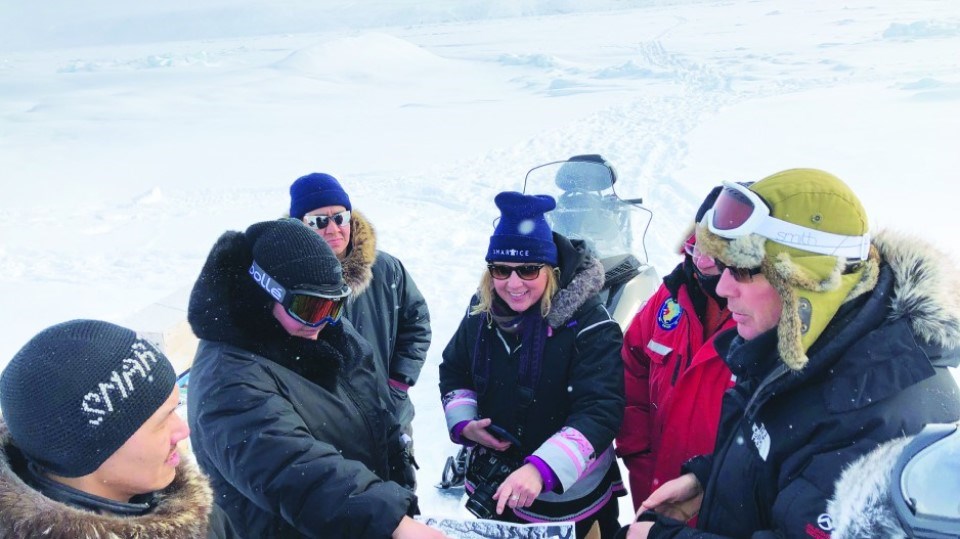This article was originally published in BIV Magazine's Philanthropy issue.
Taking care of our planet and the environment has never been more imperative, as communities across Canada experience adverse climate events ranging from floods and atmospheric rivers, to droughts, forest fires and heat domes.
Despite these adverse events — or, perhaps, because of them — individuals and groups are coming together to tackle climate change in new ways.
Philanthropy has been a powerful driver for many social and environmental movements. And as approaches to addressing climate change shift, so too do the ways in which companies, groups and individuals fund climate initiatives.
According to Devika Shah, executive director of Environment Funders Canada (EFC), climate issues are all encompassing and the only way to solve them is through systemic change.
EFC is a collection of funders that work together to respond to climate and biodiversity crises with bold action, says Shah.
“The real shifts that are required in order to get emissions under control are all systemic solutions. It’s in the way we build our infrastructure, our transportation solutions, how we power our homes. These are big, wide-scale things that nobody can do on their own, and the benefit of philanthropy is that unlike other sectors, we have a lot more flexibility with how we can deploy capital,” she says.
Philanthropy is unlike the corporate sector, which may be beholden to shareholders, or government, which bears a responsibility to taxpayers, says Shah.
“We are probably the sector with the most amount of flexibility in the way we can deploy capital. Therefore, even though the amount of capital we have relative to other sectors is smaller, what we can do with it is quite impactful.”
Shah says that she is seeing an increase in the amount of funding that climate action receives, but exact numbers are not available in Canada. EFC has a current initiative to get more accurate numbers.
She says that, for a long time, philanthropy devoted to the environment accounted for two per cent of contributions, and climate change causes received only part of that, environment-focused donations also encompassed other issues such as animal welfare.
“All the trends from other countries are showing that the number is increasing, but it still hasn’t cracked the double digits yet,” Shah says.
According to Heather McGray, director of the Climate Justice Resilience Fund, new philanthropic players coming out of the technology sector are investing a lot in climate action.
“[Philanthropy’s] started realizing climate change matters for their values and for the things that they’ve invested in for a long time. So, we’re actually seeing that kind of shift in philanthropy to where intersections of other social justice issues with climate change are starting to get addressed by funders,” McGray says.
This integration of social justice issues and climate change demonstrates a shift in the philanthropic approach toward putting people at the centre of the conversation. This perspective is the foundation of the Climate Justice Resilience Fund, which has been labelled a pioneer of North American climate justice.
Historically, philanthropy that targeted climate action was technically focused, with goals such as lowering carbon emissions or facilitating scientific advancements. More recently, climate initiatives have moved from being climate change focused to being climate justice focused, meaning that they take a more human-centred approach.
“For so long, climate change was this kind of scientific thing that had a lot of focus on melting ice caps and polar bears, and people hadn’t really tuned into what it means for human beings, and in particular, for some human beings more than others,” says McGray.
Shah agrees.
“It’s a real shift that’s happening in the climate movement,” says Shah. “For a long time, we’ve left people out of the equation. And I think more and more as climate change itself intensifies, and we see who it’s affecting the most, it’s clear that there are massive equity dimensions to the impacts of climate change, and they can’t be ignored.”
Both EFC and the Climate Justice Resilience Fund are working to highlight groups affected by climate change.
For example, the resilience fund is working with SmartICE to give Inuit communities real-time ice information in order to plan travel. SmartICE, which claims the worldʼs first climate change adaptation tool that integrates traditional knowledge with advanced data acquisition and remote monitoring technology, is working with the Climate Justice Resilience Fund through a three-year, $500,000 grant project.
More opportunities materialize when capital and action expand beyond a strict focus on the science, according to McGray. It’s a shift away from “very siloed thinking” — the result of a desire for efficiency, results or strategy — that can be common in philanthropy.
“It leads to a kind of ‘go at it alone’ tendency which sometimes misses the forest for the trees,” she says. “[But] the complexity of this issue and the intersections with so many other issues can’t really be dealt with in silos very well.”
Collaboration, and engagement with people who are being affected — and funded — is key. “Those folks actually engaging in philanthropy is what I’m most excited about right now,” says McGray. “Models that enable that to happen often lead to very holistic solutions, and often very inexpensive solutions.”
Critical to the people-centred approach is collaboration, which is important when organizations are looking to create systemic change.
The basis of collaboration at EFC means that many of the groups involved can accomplish far more together than on their own. Not only does this improve project and program outcomes, but it allows organizations to approach initiatives with new conceptualizations of how to create change.
“Our role is to provide the convening power and the capacity building for funders to come together and work collectively in ways that have a bigger impact than any of them would achieve by working independently,” says Shah.
This article was originally published in BIV Magazine's Philanthropy issue under the headline ‘Human-centred climate action.’ Check out BIV’s full digital magazine archive here.




